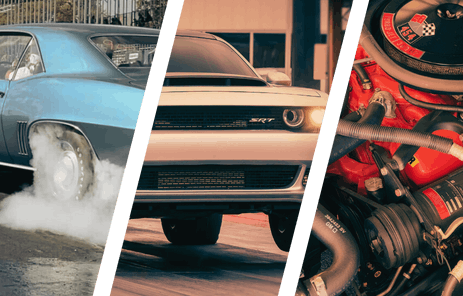It’s 2013, we keep telling ourselves. So far, we’ve invented and enjoyed the fruits of modern medicine, communication, and technology to give us such wonders as unmanned vehicles, the internet, particle acceleration, and iPhones.
But we still don’t have flying cars! What the hell, man?! Where are the friggin’ flying cars, you know, the ones that look cool, are affordable, and fly?

Alas, unless you can afford a car like the one above, it’s a few years away. But hey, who cares about that, when you can ramble around on both land and water with ease? Yes, you read that right. Watercar, a company out of Fountain Valley, California, wants to give you the best of both worlds with its amphibious Panther.
Taking its body shape from the Jeep, this odd yet amazing contraption handles the transition from land to sea and back with ease. Don’t let this upset you, but the Panther’s powertrain is derived from an Acura 3.7L VTEC V6 engine, for no other reasons than the argument that its durability, weight, power, and clearance made it the most optimum choice for the job. Rated at 305hp, the aluminum engine is equipped with single overhead camshaft cylinder heads and 24 valves, each controlled by Acura’s Variable valve Timing and lift Electronic Control (VTEC).

A Watercar-made and patented transfer case is what makes the car move both on land and at sea. Using a set of Winter’s Quick Change gears and components, and a model 091 VW Vanagon bus transaxle, the vehicle will go 80+mph on the road and 40+mph on the water. Perfect for wakeboarding, tubing, or skiing, as depicted in the video above.
It can enter the water at 15mph top speed, so long as the beach and water proper are not separated by a step larger than 6 inches. In the drink, it’s a stable ride, and can be used out on open water, not just a lake or river. Common sense rules apply, however; the little 15-ft. Panther can’t brave too high a wave.
If you so choose to take it off-roading, which it’s capable of, the lightweight chromoly chassis is fine with navigating familiar terrains. Once again, common sense: the Panther has no rear-wheel drive, so if you’re stuck somewhere, it’d be best to have a way to get it out–i.e. another vehicle, but with 4WD.
It’s an expensive thing, with a completely built model priced at $175,000 and only able to run on 91-octane gasoline. But hey, for less than half of the price of the Terrafugia, you’re getting a much better bang for the buck. Plus, duck-hunting! Can you say, “Hell yeah”?

So, sink or swim? Is the Panther worth it? Or should it take a long drive off a short pier? Let us know in the comments.
You might also like
Leno's Law Update: Good, Bad News For Older Cars, Trucks
Proponents argue that keeping a well-maintained classic car on the road avoids the large environmental footprint of building a brand-new vehicle. The hardship (and expense) of getting a car smogged in California






